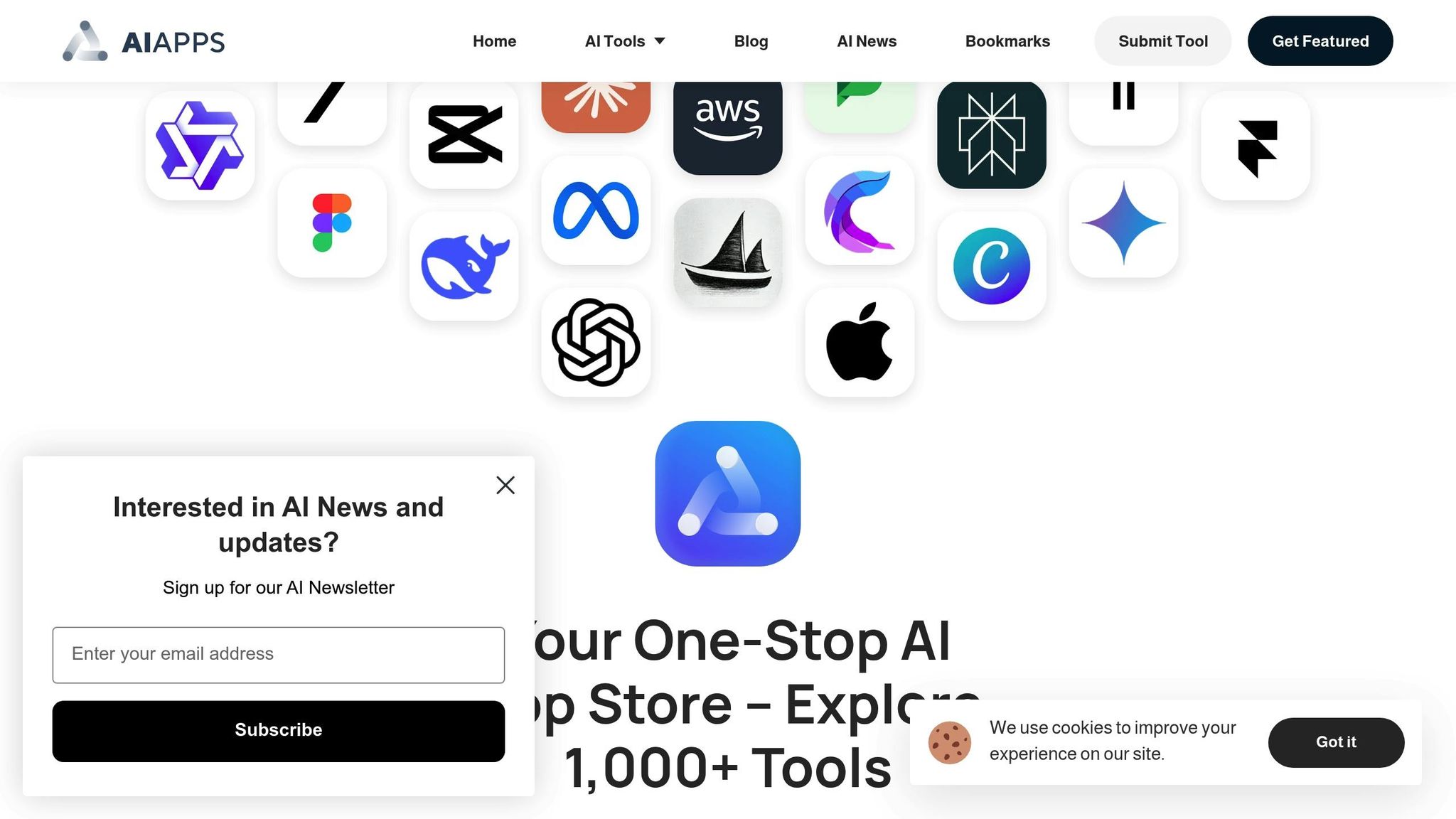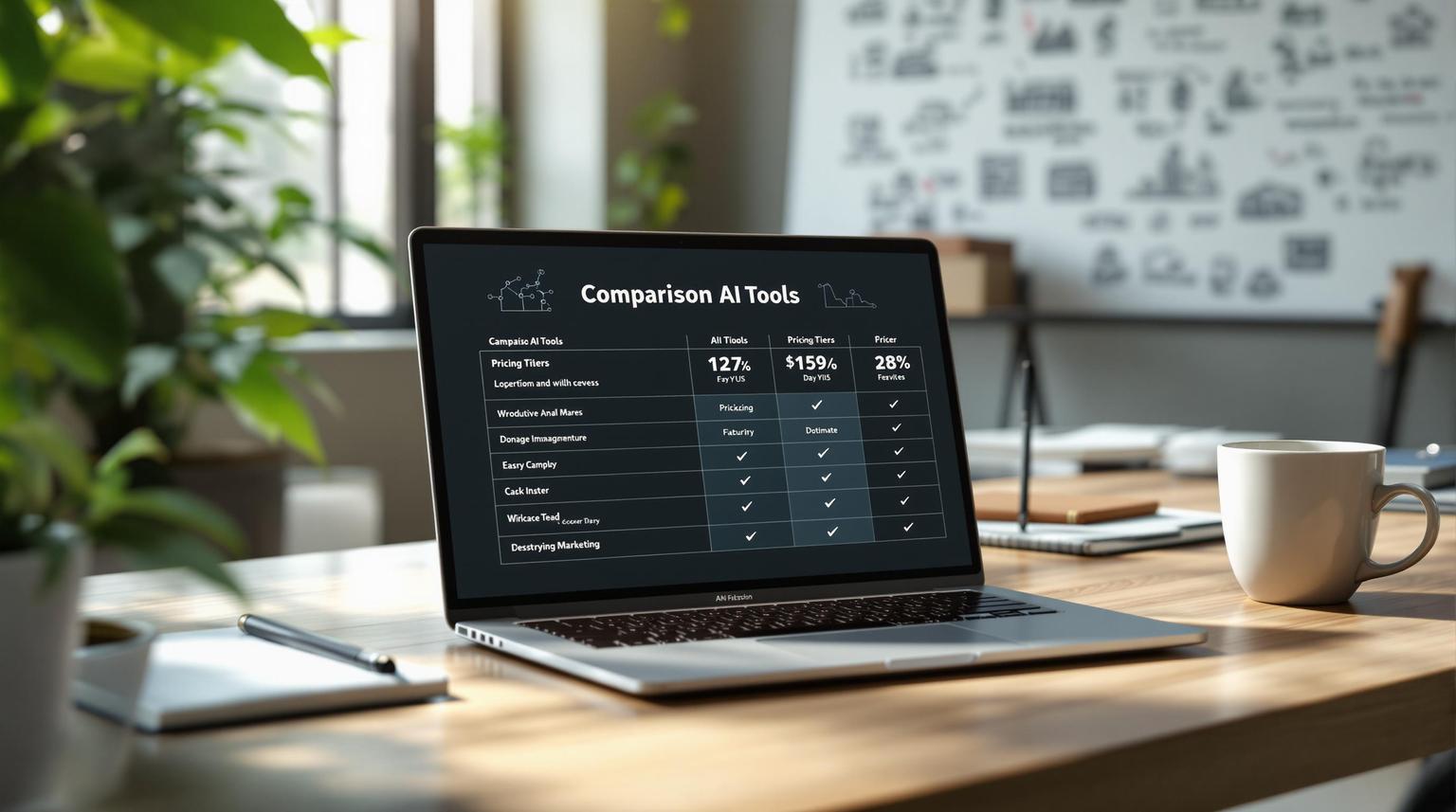AI can transform small businesses, but proving its value is tough. Tight budgets, limited expertise, and complex ROI measurement often hold companies back. Here's what you need to know:
- Only 14% of small businesses use AI, compared to 34% of larger companies.
- AI can boost productivity by 40%, cut costs by 15.2%, and increase revenue by 15.8%.
- ROI challenges include:
- High upfront costs and delayed returns (often taking 2+ years).
- Difficulty linking AI improvements directly to revenue.
- Poor data quality and compliance hurdles.
- Lack of technical knowledge and integration issues.
- Key solutions:
- Start with small, focused AI projects.
- Use pre-trained models and low-cost tools like TensorFlow or OpenAI GPT.
- Prioritize data preparation and privacy compliance.
- Track ROI with metrics like cost savings, revenue growth, and time efficiency.
Small businesses that set clear goals, choose the right tools, and focus on long-term gains can overcome these challenges and see meaningful results.
Embracing AI: Overcoming Fears and Maximizing ROI for Small Business Success | Business RadioX®...

Why AI ROI Calculation Is Difficult
Figuring out the return on investment (ROI) for AI isn't as straightforward as tallying up traditional business expenses. Unlike purchasing equipment or hiring new employees, AI projects often ripple across multiple areas of a business, making it tricky to pinpoint their exact value. Limited data, tight budgets, and a shortage of specialists only add to the challenge. These hurdles lay the groundwork for the specific issues we'll explore below.
The difficulty runs deeper than many business owners expect. AI projects often deliver benefits that are harder to measure compared to traditional IT initiatives. This explains why 71% of finance leaders worry about how to measure AI ROI, even though 68% of finance departments report seeing clear benefits from their AI investments.
Problems with Measuring AI ROI
One of the biggest challenges for small businesses is linking AI's impact directly to revenue. For example, when an AI-powered chatbot handles customer service, streamlines inventory management, and speeds up order processing all at once, it’s tough to isolate which improvements contribute most to the bottom line.
Nearly half of IT leaders admit they struggle to estimate or demonstrate the value of AI technologies, even though over 95% report using AI in at least one business process.
Interestingly, only 5.2% of companies have reported substantial earnings increases (over 10%) from AI initiatives. This highlights how difficult it is for businesses to fully capture and measure AI’s impact. Estimating or proving AI’s value remains one of the top barriers to its adoption.
"What you really want to be doing is finding a problem to solve with it first."
- Stuart King, CTO of cybersecurity consulting firm AnzenSage
Short-Term vs. Long-Term Value
Adding to the measurement challenges, many businesses expect immediate payoffs from AI, which complicates ROI assessments. Small businesses, in particular, often look for quick wins. However, a recent survey found that 75% of companies aren’t yet seeing ROI from AI because they focus on low-risk, low-impact tasks and expect instant results.
AI investments tend to deliver financial returns over the long haul - sometimes taking months or even years to pay off. Companies with a long-term focus often see better outcomes. For instance, McKinsey's global AI survey revealed that the most AI-savvy companies attribute over 10% of their annual EBIT growth to AI efforts. Similarly, an IDC/Microsoft study found that for every $1 invested in AI, businesses typically see a return of $3.50.
Overemphasizing short-term metrics can lead to narrow decision-making and missed opportunities. Businesses focused only on immediate returns might overlook AI's potential to transform their operations, create new revenue streams, and deliver deeper customer insights.
Limited Technical Knowledge
A lack of understanding is another major hurdle. Seventy-seven percent of small businesses cite insufficient knowledge about AI or uncertainty about its benefits as reasons for not adopting the technology. This knowledge gap often leads to unrealistic ROI expectations or inaccurate measurements of actual results.
For small business owners, AI's complexity can feel overwhelming, making it hard to distinguish between routine operational gains and those driven by AI. On top of this, a shortage of skilled professionals further complicates implementation efforts. Without the right expertise, small teams struggle to gauge the true impact of AI.
Infrastructure is another sticking point. Many small businesses lack the capacity to handle large datasets securely, raising concerns about data breaches and regulatory compliance.
"Investing in AI proficiency for your team is a non-negotiable step towards a robust implementation that aligns with your company's strategic goals."
- Stephen McClelland, Digital Strategist at ProfileTree
To get started, small businesses can focus on accessible, user-friendly AI tools that meet specific needs. Building AI knowledge within teams is crucial for better ROI assessments and long-term success. Addressing this knowledge gap is key to simplifying AI strategies and achieving meaningful results.
Data Quality, Privacy, and Compliance Problems
Small businesses face a double-edged challenge when it comes to AI: ensuring data quality and meeting privacy regulations. These issues go hand in hand with the difficulty of measuring return on investment (ROI), making AI adoption a complex endeavor. Without addressing these critical factors, small businesses risk undermining their AI projects and missing out on the benefits they hope to achieve.
The Importance of Quality Data
At the heart of every successful AI implementation lies one key ingredient: quality data. As the saying goes, "AI is only as good as the data it learns from". For small businesses, ensuring data quality often becomes an unexpected hurdle, especially when budgets are tight.
Consider this: 81% of AI professionals report significant data quality problems within their companies, while 85% believe leadership isn’t doing enough to tackle these issues. This gap between awareness and action creates a costly cycle. Poor data quality costs businesses a staggering $12.9 million annually, contributing to an overall economic loss of $3 trillion. For small businesses, even a fraction of these losses can be devastating.
Flawed data - whether outdated, incomplete, or inconsistent - leads to unreliable AI outputs. This, in turn, results in bad decisions and wasted resources.
"AI thrives on data, [but] most organizations are drowning in fragmented data... Without clean, correct, and accessible data, even the most advanced AI models are destined to fail." - Paul Pallath, Vice President of Applied AI at Searce
The trust issue compounds the problem. While 77% of data and analytics professionals aim to make decisions based on data, only 46% trust the information they’re using. This lack of confidence undermines the very purpose of AI in driving smarter business decisions.
"As companies rush to implement AI, they risk building on flawed data, leading to biased models, unreliable insights, and poor ROI... AI success isn't just about deploying models - it's about ensuring the data powering those models is trusted and reliable." - Drew Clarke, EVP & GM, Data Business Unit at Qlik
To tackle this, small businesses must invest in preparing their data before diving into AI. This includes cleaning and organizing existing data, setting up effective data collection systems, and creating clear governance frameworks. While this preparation requires upfront effort, it ensures AI systems deliver reliable and actionable insights. However, even with quality data, privacy and compliance challenges remain a significant hurdle.
Privacy and Compliance Requirements
Once data quality is addressed, small businesses must navigate the complex landscape of privacy regulations. Laws like GDPR and CCPA impose strict requirements, and non-compliance can lead to severe penalties. For example, GDPR fines can reach up to 4% of a company’s global revenue, a potentially crippling blow for smaller organizations.
The stakes go beyond financial penalties. 80% of consumers say they would stop doing business with a company after a data breach. Additionally, the average global cost of a data breach in 2024 hit $4.88 million, a 10% increase from the previous year. For small businesses, these risks make safeguarding customer data a top priority.
AI systems often require extensive data collection and processing, which can clash with privacy regulations if not managed carefully. Striking a balance between leveraging AI and protecting customer data is critical.
"Ten years ago, most people thought about data privacy in terms of online shopping... But now we've seen companies shift to this ubiquitous data collection that trains AI systems, which can have major impact across society, especially our civil rights." - Jennifer King, Stanford University Institute for Human-Centered Artificial Intelligence
The risks don’t stop there. Data collected for AI becomes a prime target for cyberattacks. As Jeff Crume, IBM Security Distinguished Engineer, puts it, "This ends up with a big bullseye that somebody's going to try to hit".
To mitigate these risks, small businesses should adopt a "privacy by design" approach. This involves embedding privacy considerations into every step of AI implementation. Key practices include collecting only the necessary data, obtaining explicit consent, anonymizing sensitive information, and being transparent about how data is used.
"It's crucial to adopt a 'privacy by design' approach, ensuring privacy is integrated not just in AI, but also across business operations and other technology products. It's about making privacy a default standard rather than an afterthought." - Arun Kumar, Revature
Practical measures include conducting regular risk assessments, enforcing strong access controls, maintaining clear privacy policies, and auditing AI tools to ensure compliance with regulations. While these steps add complexity and cost, they are essential for protecting customers and ensuring the long-term success of AI investments.
Budget Limits and System Integration Issues
Practical hurdles like limited budgets and system integration often play a decisive role in determining the success or failure of AI initiatives. These challenges directly affect the return on investment (ROI) from AI, making it essential for businesses to address them effectively.
Budget and Staff Constraints
For small businesses, tight financial constraints heavily influence AI adoption strategies. Many allocate only modest annual budgets for AI, which limits their ability to explore advanced solutions. However, the potential benefits are clear: businesses adopting AI can achieve revenue growth of 6%–10% and save up to $70,000 annually.
AI solutions generally fall into three budget categories:
| Budget Range | Investment Level | Typical Solutions |
|---|---|---|
| Low-budget | $99–$500/month or $3,000 upfront + $300/month | Chatbots, automated scheduling, email marketing tools |
| Mid-range | $500–$5,000/month or $5,000 upfront + $500/month | AI-powered CRM, sales automation, data analytics |
| Higher-end | $10,000–$25,000 upfront + $3,000+/month | Custom AI development |
Staffing limitations add another layer of complexity. Smaller companies often face knowledge gaps, with nearly 30% of small businesses unsure about which AI tools or strategies to adopt, compared to just 12% of larger enterprises. This creates a challenging cycle: businesses need expertise to make informed AI investments but lack the resources to secure that expertise. Starting with a pilot project can be a smart way to test AI’s effectiveness and demonstrate ROI before committing to larger investments.
But even with budgets and expertise in place, integrating AI into existing systems remains a significant hurdle.
Connecting AI with Current Systems
System integration is one of the toughest challenges in AI adoption. Only 26% of organizations describe themselves as "seasoned" in adopting AI. Many legacy systems lack the APIs or data structures necessary for seamless integration with modern AI tools, and data silos can further complicate access to reliable information.
"AI is only as good as the data you have. [...] Having your data in a unified system is essential, so you do not have to gather data from all over the place and then question if your data is accurate or not."
- Liza Schwarz, Senior Director of Global Product Marketing, Oracle NetSuite
The complexity and cost of integration depend on various factors, including the sophistication of the AI features, specific requirements like computer vision or natural language processing, and the state of existing IT infrastructure. Small businesses can tackle these challenges by conducting a thorough assessment of their current systems, developing a tailored integration plan aligned with their goals, and ensuring their data is clean and unified. A well-executed integration can improve data flow and operational efficiency, directly boosting ROI.
Choosing the Right AI Tools
Once budget and integration challenges are addressed, selecting the right AI tools becomes critical. With over 1,000 AI tools on the market, finding the right fit is essential for achieving meaningful ROI. However, up to 85% of AI projects fail because they don’t align with the business’s actual needs or objectives. When implemented correctly, AI-driven automation can cut operational costs by up to 40%, speed up deployment by 50%, and reduce infrastructure expenses by 30%.
Platforms like AI Apps simplify this process by offering a centralized hub of AI tools for tasks such as image generation, video editing, text creation, and automation. Advanced filtering options help businesses find solutions that meet both their technical and budgetary needs, ensuring alignment with their specific goals.
To keep costs manageable, businesses can turn to open-source tools like TensorFlow, Scikit-Learn, OpenAI GPT, and PyTorch. Other cost-effective approaches include leveraging AI-as-a-Service (AIaaS) solutions from providers like AWS, Google Cloud, and Microsoft Azure, which offer scalable, pay-as-you-go options. Pre-trained models, low-code/no-code platforms, and outsourcing AI development are additional strategies to reduce expenses and speed up implementation.
Pre-trained models provide ready-made solutions for common business needs:
| Pre-Trained Model | Industry Application |
|---|---|
| BERT | Fraud detection in finance and banking |
| ResNet | Image recognition for e-commerce |
| Dialogflow | Chatbots for customer support |
Implementing AI in phases - starting with smaller, focused applications - allows businesses to evaluate ROI incrementally before scaling up.
"We understand the significance of strategic planning in AI deployment. It is crucial to define a clear AI strategy that aligns with our business goals and sets the stage for a successful integration."
- Ciaran Connolly, ProfileTree Founder
sbb-itb-212c9ea
Tools and Methods for Better AI ROI Assessment
Evaluating the return on investment (ROI) for AI projects involves more than just crunching numbers. For small businesses, it’s about using the right tools and following structured methods to measure both short-term savings and long-term benefits. The key is to establish clear, measurable goals before implementation and to track progress consistently. These metrics form the backbone of effective ROI assessment.
Simple Ways to Measure ROI
Start by setting clear objectives and identifying the right metrics to track. While traditional ROI focuses on financial outcomes, AI ROI expands to include factors like operational efficiency, innovation, and competitive edge. This broader view helps businesses grasp the full impact of their AI investments.
A cost-benefit analysis is a foundational step. This involves calculating net benefits (like increased revenue and labor savings), total costs (including software, training, and maintenance), and the time frame for measurement. Dmitri Adler, Co-Founder of Data Society, emphasizes the importance of patience:
"The return on investment for data and AI training programs is ultimately measured via productivity. You typically need a full year of data to determine effectiveness, and the real ROI can be measured over 12 to 24 months."
Baseline metrics are crucial for comparison. Before deploying AI, document your current performance in areas like customer service response times, operational costs, and employee productivity. For instance, a small firm with 15 employees managed to cut scheduling time from 4 hours to 1 hour weekly, saving $900 in labor over six months.
Using structured evaluation methods allows businesses to quantify both tangible and intangible benefits. Measurable improvements in time saved, reduced costs, increased revenue, and customer satisfaction offer a clear picture of AI's impact. For example, a digital marketing agency automated its email campaigns, saving $10,000 in costs and generating $50,000 in new revenue - a 500% ROI.
Additional metrics tied to business value include customer service KPIs, such as reducing average handle time to 6 minutes per call, lowering cost per call, and achieving satisfaction scores between 85–95%.
With these metrics in place, the next step is to choose the right tools to achieve these goals.
Using AI Apps for Tool Selection

Selecting the right tools is critical for tracking AI ROI effectively. Platforms like AI Apps simplify this process by offering access to over 1,000 AI tools across various categories. These platforms streamline the selection process by allowing businesses to filter tools by category, sub-category, and pricing, ensuring they align with both technical needs and budget constraints.
A smart approach begins with identifying specific challenges. Pinpoint your biggest pain points, then use AI Apps’ filters to explore suitable options. Many businesses start with free or basic plans, typically spending between $50 and $500 per month. AI Apps also highlights tools with trial options, enabling businesses to test functionality before making significant investments.
To make the process smoother, designate a "tool champion" within your team - someone responsible for setting up and troubleshooting the tools. This role ensures effective tracking of key metrics like time saved, tasks automated, lead conversion rates, and customer satisfaction.
AI Apps also employs a multi-step verification process to ensure the quality of its listed tools. By offering curated options, the platform saves time and reduces the risk of choosing ineffective solutions, ultimately supporting better ROI outcomes.
ROI Calculators and Assessment Tools
Specialized tools make it easier to measure the diverse benefits of AI investments. These tools provide a clearer picture of both immediate savings and long-term gains, addressing the challenges of quantifying AI’s multidimensional impact.
Performance tracking tools focus on metrics like adoption rates, frequency of use, session length, and queries per session. Monitoring reductions in operational costs through automation, along with gains in efficiency from time saved, improved productivity, and fewer errors, helps businesses understand AI’s contribution.
Customer impact measurement tracks metrics like satisfaction scores, Net Promoter Score (NPS), and customer feedback. For example, a Technology Training Incubator used AI to improve its contact center, cutting response times from 24 hours to 6 hours and automating over 80% of inquiries. This led to a 13% boost in customer satisfaction and potential annual savings of $120,000.
Comprehensive ROI tracking combines immediate results with long-term performance monitoring. Businesses that actively measure AI ROI are 1.7 times more likely to achieve their goals. High-performing companies report an average ROI of 13% on AI projects, significantly higher than the 5.9% average.
Andrew Lo, Director of the Laboratory for Financial Engineering at MIT Sloan School of Management, explains the importance of planning:
"There are many different ways of measuring impact. That needs to be decided upfront, because you can't manage what you don't measure."
To ensure success, businesses should regularly assess performance, gather team feedback, and refine strategies. Tracking metrics like employee capacity and revenue per employee can reveal whether AI is enabling teams to achieve more with fewer resources. Comparing expected outcomes with actual results helps identify and address any gaps in performance.
Best Practices for Long-Term AI Success
Achieving long-term success with AI requires a thoughtful and adaptable approach. For small businesses, this means adopting strategies that ensure AI tools continue to deliver results over time. Recent trends highlight the need for sustained, effective AI operations to remain competitive.
The goal is to establish practices that grow alongside your business. This involves careful planning, continuous oversight, and using performance data to refine strategies.
Focus on Targeted AI Use
The most successful businesses deploy AI for tasks that are repetitive or demand greater speed and accuracy. Begin by identifying areas where AI can make an immediate impact, such as customer service or data entry. Many existing tools already include AI features, offering an easy way to test its effectiveness in your daily operations without significant risk.
Gradual implementation is key. Start small to build your team’s confidence and skills. As Sucharita Kodali, VP and principal analyst at Forrester Research, explains:
"People need to be open to all of the different possibilities that can get you from point A to point B."
Training your team to view AI as a tool that enhances their work is critical. This targeted approach also simplifies tracking performance and assessing results.
Regular Monitoring and Review
Once AI is in use, continuous monitoring becomes essential. AI systems need regular evaluation to ensure they’re meeting performance goals. Automated tools can help by flagging anomalies or deviations, while well-defined metrics - like time saved, cost reductions, or revenue growth - can measure real business outcomes.
Monitoring for issues like model drift and maintaining data quality through regular audits is equally important. Feedback loops that let users report inaccuracies can further improve system reliability. Neontri emphasizes the importance of balancing technical performance with business impact:
"Measuring AI performance is about balancing technical excellence with business impact. Organizations that have a full evaluation framework can justify AI investments, make strategic decisions, and continuously improve systems."
Clear AI Management
Effective AI management reduces risks and ensures long-term returns. Start by creating strategies that address your current needs while planning for future growth. This includes tackling integration challenges and educating employees on how to use AI effectively. Strong data governance policies - covering collection, storage, and usage - are essential, along with secure, centralized systems to maintain data integrity.
Before rolling out any AI tool, establish clear success criteria and confirm that the solution integrates seamlessly with your existing systems. It should also be scalable to meet your business’s growth. Formal training programs can help employees adapt to new tools and features, boosting both adoption and confidence. Regular updates, performance reviews, and audits keep AI systems running smoothly, while human oversight ensures these tools remain aligned with your business goals.
With 66% of small business owners acknowledging that AI adoption is critical for staying competitive, these management practices are essential. They not only maintain AI performance but also improve the ability to track ROI, reinforcing the value AI brings to your business.
Conclusion: Key Points for Small Businesses
To sum up, tackling data quality, choosing the right tools, and implementing AI thoughtfully are essential steps for small businesses. While calculating the return on investment (ROI) from AI can be tricky, the potential benefits make it worth the effort. Companies that adopt AI at scale report a threefold ROI, with 84% of C-suite executives recognizing AI as a critical driver of growth. Focusing on high-impact projects and setting SMART goals can help deliver measurable results quickly.
The foundation for any successful AI project is clean, well-organized data. Prioritizing strong data governance before introducing AI tools is a must.
Platforms like AI Apps make it easier to find cost-effective, curated tools, simplifying the decision-making process and paving the way for smoother implementation.
Proof of concepts (POCs) are a great way to test your strategy and pinpoint any necessary systemic changes. Companies taking a broader approach to AI integration have seen up to 22% higher ROI for customer service initiatives and 30% higher ROI for generative AI projects.
Gaining early support from stakeholders and investing in team training can build confidence and foster continuous improvement.
Small businesses that set clear targets, manage their data effectively, and keep a close eye on performance metrics can gain a competitive edge.
To justify AI investments, translate improvements into concrete benefits - like time saved, cost reductions, or revenue growth - using a metrics dashboard.
With the right approach, tools, and commitment to following best practices, small businesses can overcome challenges in calculating ROI and fully realize the potential of AI.
FAQs
How can small businesses enhance data quality and ensure compliance with privacy regulations when adopting AI?
To improve data quality and stay on top of privacy regulations, small businesses should begin with regular data audits. These audits help pinpoint inaccuracies or inconsistencies, allowing you to fix issues before they become bigger problems. Alongside this, adopting clear data governance practices - like anonymizing and minimizing data - plays a big role in keeping sensitive information safe.
Transparency is another must. Make sure your team is well-trained in handling data correctly, explain to customers how their data is being used, and keep thorough records of processing activities and any consent you've obtained. On the security front, tools like encryption, access controls, and real-time monitoring provide an extra layer of protection against potential threats. Not only do these measures secure your data, but they also help earn the trust of your customers and partners.
What are the best ways for small businesses to measure the long-term ROI of AI investments, especially when results take time to show?
To gauge the long-term ROI of AI investments, small businesses should focus on tracking key performance indicators like cost savings, revenue growth, productivity boosts, and improved process efficiency. These metrics help paint a clear picture of how AI is influencing overall business outcomes.
If immediate results seem elusive, try breaking ROI into short-term and long-term objectives. For instance, in the short term, keep an eye on efficiency improvements or reductions in manual tasks. Over time, evaluate AI’s broader impact, such as increased profitability, enhanced customer satisfaction, or growth into new markets.
Traditional ROI calculations - comparing total costs to net benefits - can also be useful for quantifying financial returns. Regularly reviewing these metrics allows businesses to better understand the ongoing value AI delivers and make smarter decisions about future investments.
How can small businesses address the challenge of limited technical expertise when adopting AI solutions?
Small businesses that lack technical expertise can still successfully adopt AI by turning to external support. This might mean bringing in consultants or collaborating with AI specialists who can guide them through the process. With the right help, the transition becomes much smoother, and the risk of mistakes is greatly reduced.
Another smart approach is to opt for AI tools designed with non-technical users in mind. These tools often feature simple, intuitive interfaces and clear, step-by-step instructions. This makes it easier for businesses to integrate AI into their daily workflows without needing advanced technical skills.
By prioritizing easy-to-use solutions and seeking expert advice when necessary, small businesses can confidently embrace AI to boost both productivity and efficiency.



